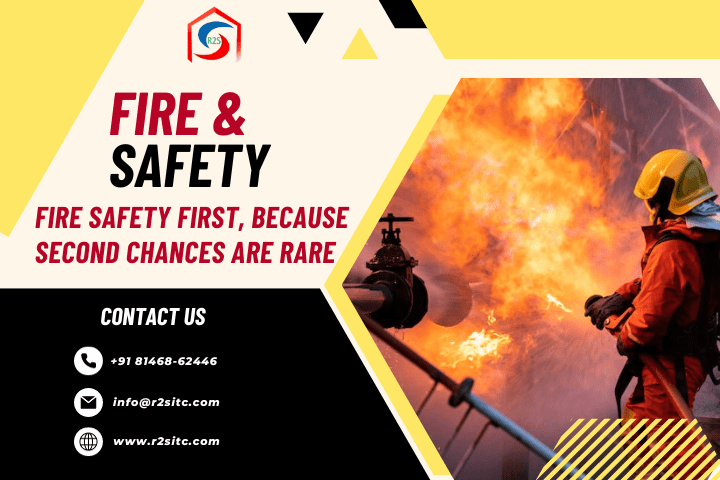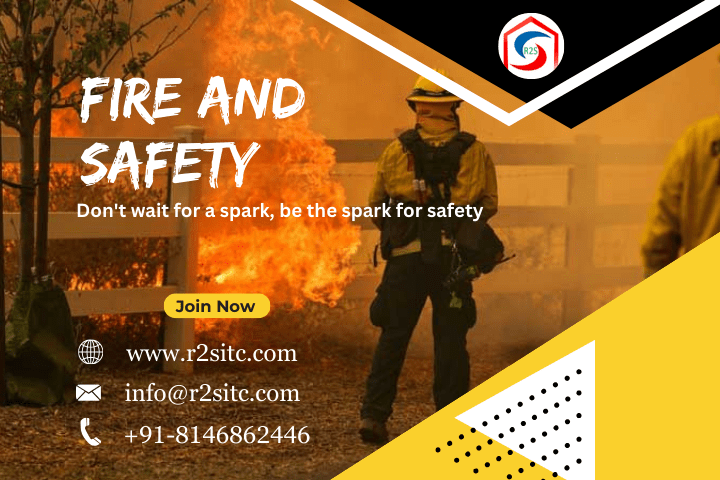The vital significance of industrial training is one thing that is frequently disregarded in the fast-paced world of industry, where advancement and innovation go hand in hand. Beyond the warning signs and hard caps, safety training is essential to creating a safe and productive work environment. We will explore the many advantages and benefits of industrial safety training in this article, which guarantee not only the success and well-being of industrial operations but also the safety of the personnel.
Overview: The Cornerstone of a Industrial Training
Let’s lay the groundwork before exploring the benefits. Industrial safety training is the cornerstone of a secure future, not just a compliance necessity. It includes an extensive collection of guidelines and protocols intended to reduce hazards, stop mishaps, and promote a responsible culture among employees.
Benefit 1: Injury prevention and reduced risk
The greatest obvious and tangible benefit of occupational safety training is the reduction of risks and the prevention of injuries. Employees who take part in training programs have the knowledge and skills necessary to identify and minimize any risks. When handling chemicals or operating machinery, a staff with proper training reduces the likelihood of accidents, leading to fewer injuries and a safer working environment.
Benefit 2: Enhanced Efficiency and Productivity
Industrial safety training has been shown to increase production, dispelling the myth that safety precautions reduce output. Employees are better able to concentrate on their duties without being sidetracked by fear or uncertainty when they feel safe and confident performing their jobs. This increased focus results in increased productivity, which directly supports the efficiency of industrial processes.
Benefit 3: Cost Savings by Reducing Accidents
One generally underestimates the financial ramifications of workplace accidents. Accidents can cause a corporation to suffer major financial losses in addition to human casualties. As a preventive strategy, industrial safety training dramatically lowers the incidence of accidents and, as a result, their associated costs. Investing in safety training saves money on everything from medical bills to legal fees.
Benefit 4: Adherence to Standards and Regulations
A dedication to safety is required by industry standards and regulatory agencies. By ensuring that businesses follow these rules, industrial safety training helps them avoid fines and other legal issues. Furthermore, a company’s reputation can be improved and increased by a commitment to safety, which will attract additional partners, investors, and customers.
Benefit 5: Enhanced Morale and Satisfaction among Employees
A motivated workforce is one that feels safe and appreciated. Workers receive industrial safety training to let them know that their health and safety come first. This dedication creates a pleasant work environment, which boosts morale, increases job satisfaction, and increases employee retention. Ultimately, this helps the business’s bottom line by lowering attrition and hiring expenses.
Benefit 6: Enhanced Readiness for Emergencies
Emergencies can occur in any job. Employees with industrial safety training are more prepared to handle emergencies such as fires, chemical spills, and medical crises. In times of crisis, prompt and well-informed action can make the difference between a situation that can be controlled and a disaster.
Benefit 7: Establishing a Safety Culture
Establishing a safety culture across the company is the ultimate objective, even beyond the training sessions. In this collective perspective, safety is viewed as a method of thinking and doing rather than just a collection of regulations. This culture is fostered via industrial safety training, whereby each employee takes on the role of an ambassador for safety and actively promotes it in their day-to-day interactions and tasks.
R2SITC: The First Industrial Training Safety Program
One name sticks out among the businesses offering industrial safety training: R2SITC (Readiness to Safety Institute of Training and Consultancy). R2SITC provides extensive training programs that are customized to fit the particular requirements of many industries, with the goal of fostering safer and more productive work environments.
Why Opt for Industrial Training from R2SITC?
Knowledge and Experience: R2SITC has a group of seasoned experts with a wealth of industrial safety knowledge. Their knowledge guarantees that training materials are not only educational but also useful and applicable to actual situations.
Tailored Solutions: Understanding that many sectors have unique safety needs, R2SITC offers tailored training programs. Their programs are made to deal with particular risks and issues, whether they are related to manufacturing, construction, or any other industry.
Cutting-Edge Training Techniques: R2SITC remains on the cutting edge of technological and business developments. The institute uses state-of-the-art training techniques, such as interactive modules and simulations, to make sure that participants are ready to take on the ever-changing demands of their particular sectors.
Dedicated to Ongoing Improvement: R2SITC is committed to ongoing improvement, which is shown in the evolution of safety standards. To guarantee that participants obtain the most recent and pertinent knowledge, the institute updates its training programs on a regular basis to conform to industry best practices and the most recent legislation.
Wrapping Up: Preserving the Future
To sum up, industrial safety training is a calculated investment in the health of the staff and the prosperity of the sector, not just a box to be checked on a compliance form. The benefits are numerous and extensive, ranging from injury prevention to creating a happy work environment. Prioritizing safety training helps businesses stay legal as well as better positioned for long-term success in the ever changing business environment.
R2SITC, with its dedication to excellence and innovation, stands as a reliable partner in this journey towards a safer, more productive industrial landscape. Invest in safety today, secure success tomorrow.











